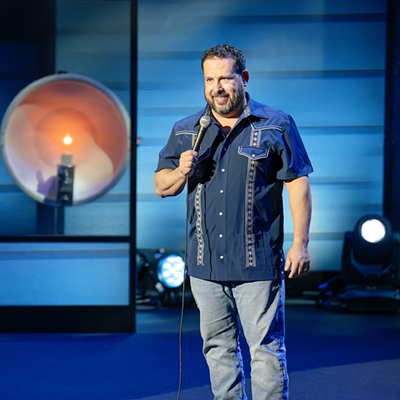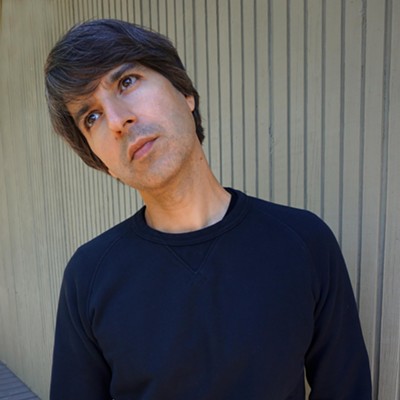There are people, however, who have successfully built a love-love relationship with the sun. They use the sun to heat their homes and cook their food--saving money doing so.
These sun-friendly people have opened their homes as part of the second Sustainable Living and Solar Home Tour. From 10 a.m. to 4 p.m. Sunday, April 3. Homes and buildings on the eastside that make efficient use of natural resources will be open for visitation. Sites with solar water heating, solar cooking and rammed-earth walls are part of the tour, along with homes making use of solar electricity, passive solar design, rainwater and graywater. Tour participants can talk with homeowners and other professionals. Tickets for the event are $10 general, $5 for students, seniors and bicyclists. A 12-page tour book includes maps, photos, descriptions and features of the sites. For more information and ticket sale locations, visit tucsonsolartour.org or call 622-4119.
According to Lisa Stage, board member of Women for Sustainable Technologies, people who take the tour "will learn there are other ways of managing their homes rather than business as usual. There are a lot of options out there for doing things efficiently."
One of these options includes passive solar design. "Most of the homes (on the tour) take advantage of how the sun is high in the sky in the summer and are designed to have shade in the summer," says Stage. Alternatively, these homes are designed to use the sun in the winter to provide warmth.
Some homeowners have taken a more active approach to solar heating and have installed solar panels. As a simple explanation, as the sun hits the panels, electricity is produced.
"Any house on Tucson Electric Power can put up solar panels and make their own electricity. It's an amazing program," says Stage. Through TEP's SunShare program, the utility bought solar panels and offers them to homeowners at a subsidized cost.
Another way to save money using the sun is to cook with it. Using a portable-sized solar oven, you are "not using as much energy for cooking and therefore keep the house cooler in the summer," says Stage.
Solar ovens are usually kept outside facing the sun but must be protected from the rain. In simple terms, they are designed as a box with a glass top that allows the sun to enter. The glass traps the heat inside and cooks your food. Think of how hot your car gets in the sun, and you can imagine the versatility of a solar oven. "The food is healthier and contains more nutrients, because it cooks slowly," adds Stage.
Besides using the sun efficiently, many of the homes on the tour have implemented ways to use rainwater and graywater--water from your shower, sink and washing machine--effectively.
"Most people have gutters off their roof, and the water drips off. With water harvesting, you can catch the water in a barrel and use it. With graywater, you can use the water in your house, capture it and reuse it," says Stage. Both rainwater and graywater are used to water landscaping.
The land itself can also be used to build a home. There will be two straw-bale homes on the tour, as well as a home with rammed-earth walls (composed of wet dirt and sand that is tamped down).
For those interested in simpler energy conservation methods, there are still plenty of things that can be done. "You can buy compact fluorescent light bulbs," says Stage. "They are four times more efficient than regular light bulbs." Other simple techniques include adjusting your thermostat, not leaving doors or windows open, shading your windows and growing trees or vines to limit the sun's heat in a home.
The homes on this year's tour are all on the eastside of town for a reason. "We chose the homes so people could do more walking and biking. We wanted to make it convenient for people not to do as much driving, so they use less energy," says Stage. While most locations will be open for tours, there are four locations that will be drive- or walk-by only. Tour goers can start at any location, but one possible starting point may be at the neighborhood center in Civano, a development at 7 Generations Way, off Houghton Road. Contractors and service providers will be on hand to answer questions and provide information.
Stage hopes people will learn new methods to achieve more sustainable homes. "The way we meet our needs now is increasingly unsustainable. We are using more resources than the earth can provide. If we don't consume as many resources, there will be resources available for future generations. We need to educate people on how to leave a lighter footprint on the earth."







